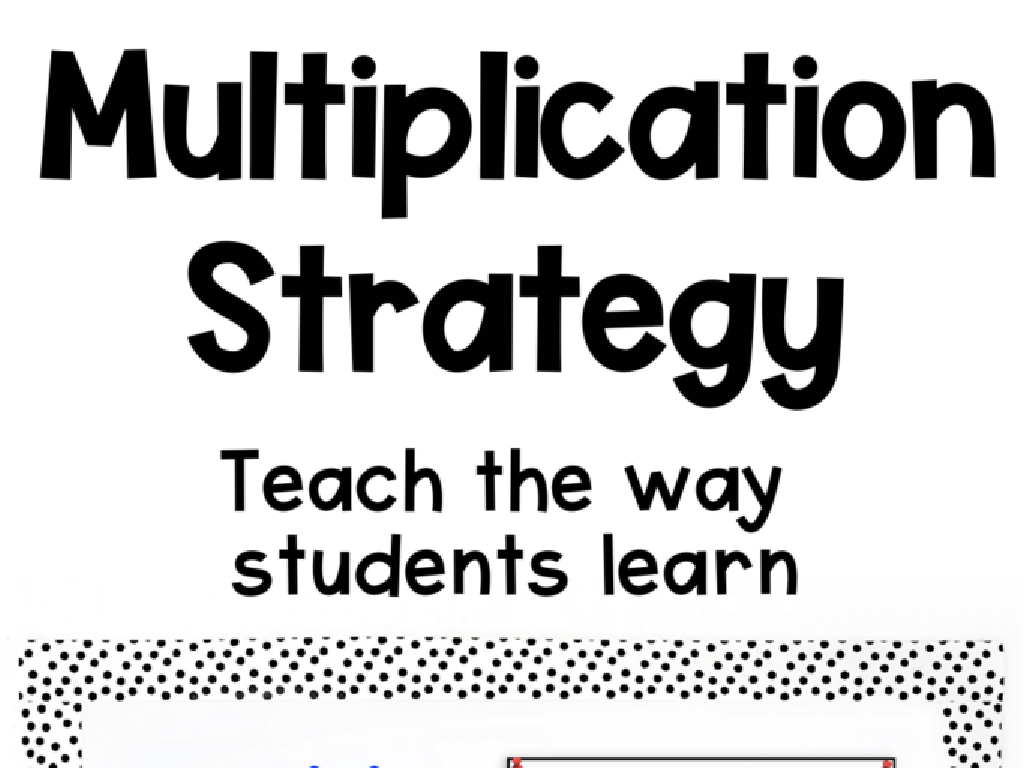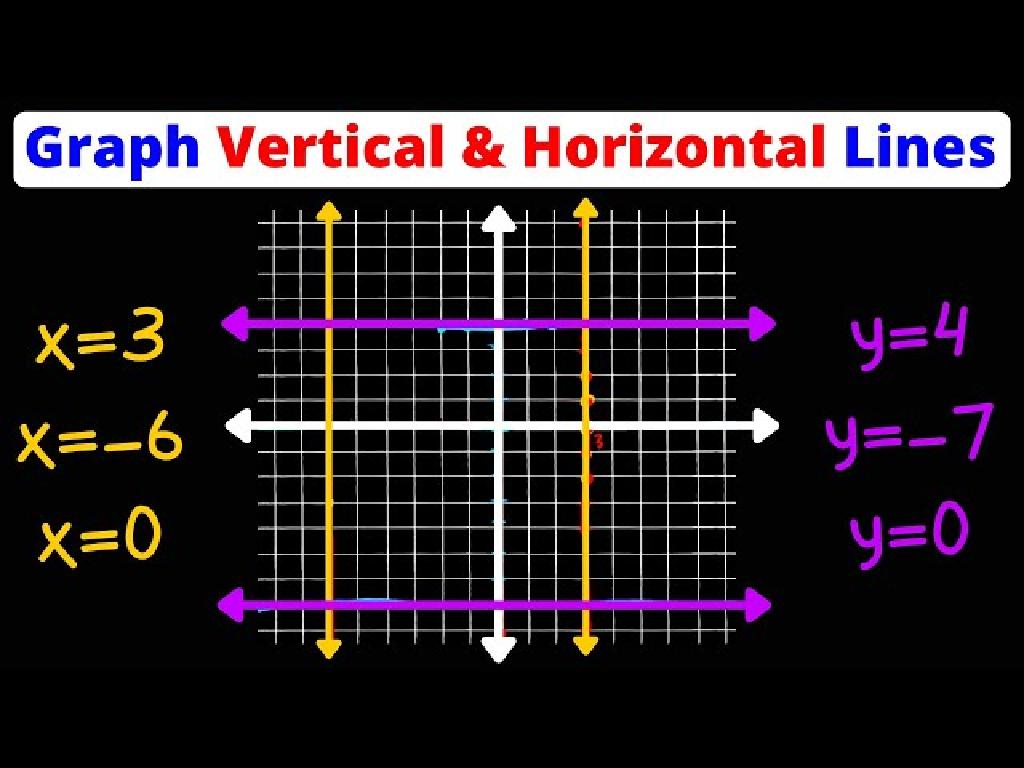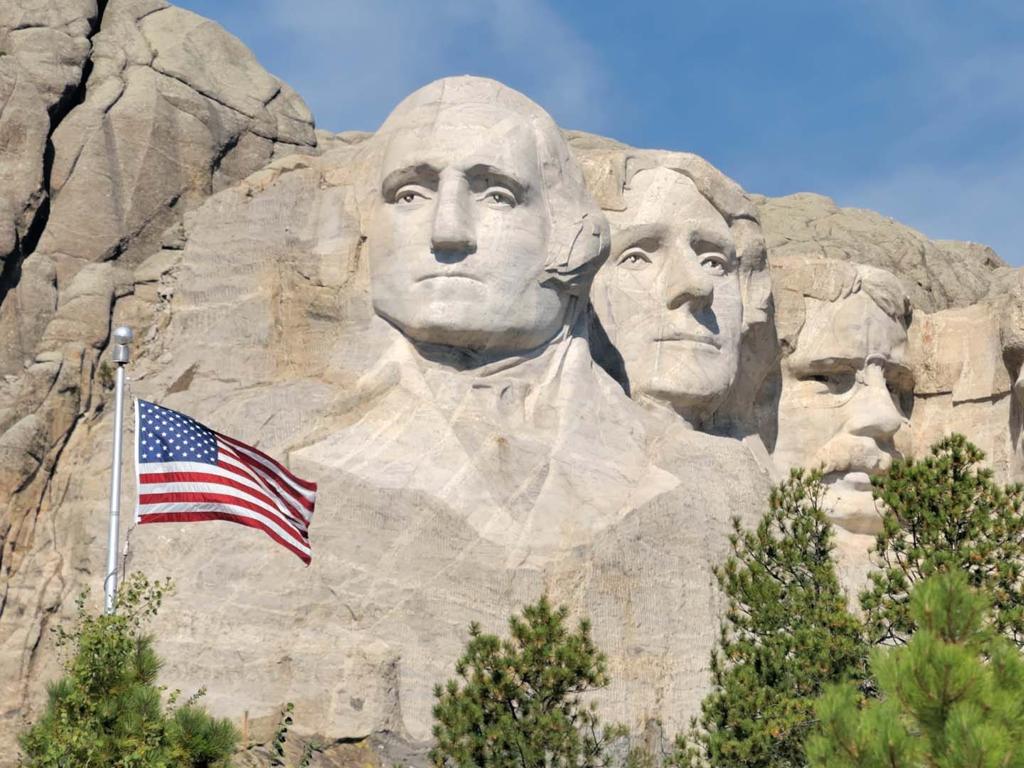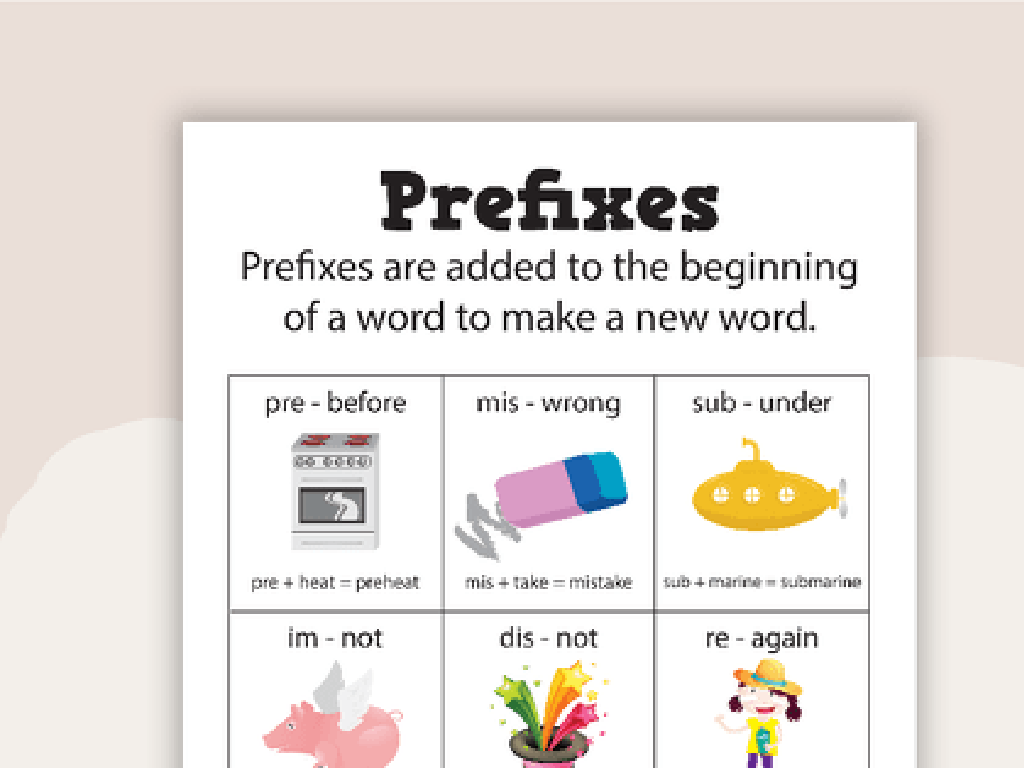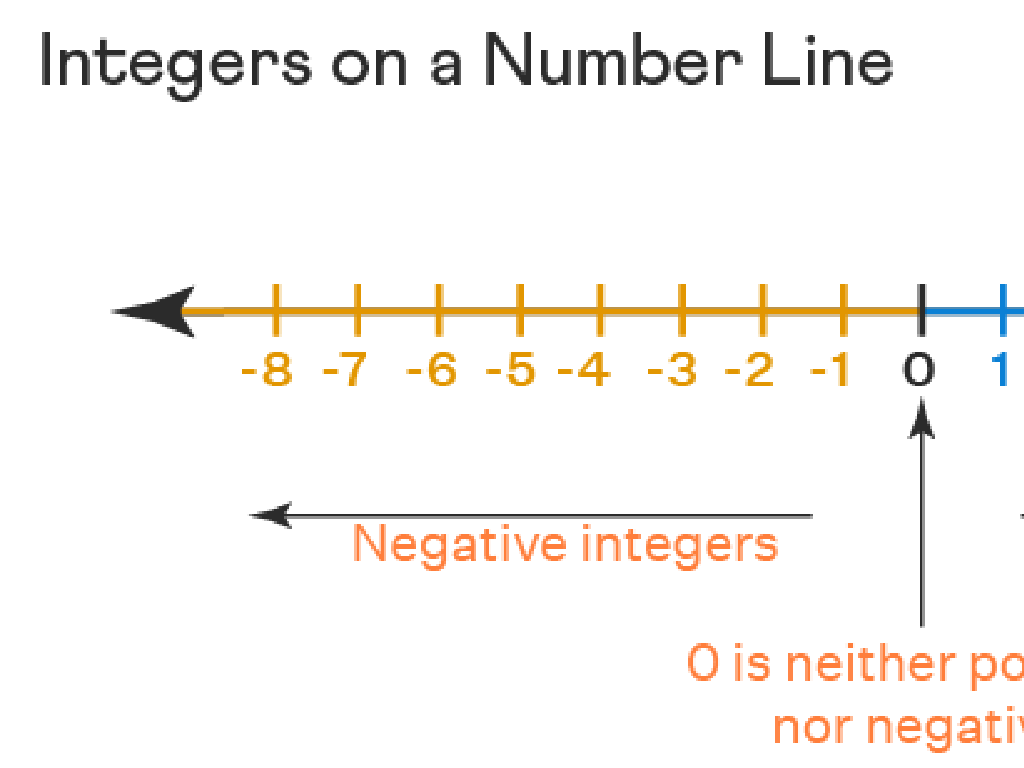Location In A Grid
Subject: Math
Grade: Kindergarten
Topic: Positions
Summary: Discover the fun of locating objects on a grid with this engaging Kindergarten math lesson. Kids will learn about positions such as up, down, left, and right using interactive games like 'Grid Tag' and 'Treasure Hunt' that incorporate toys and stickers. The lesson explores the concepts of rows and columns, comparing them to game boards and treasure maps, to help students understand and communicate spatial relationships. Through hands-on activities, students practice identifying and moving objects within grids, developing essential early geometry skills in a playful environment.
Please LOG IN to download the presentation. Access is available to registered users only.
View More Content
Finding Locations on a Grid
– Learn about positions
– Positions are places like up, down, left, right
– What is a grid?
– A grid has rows (side to side) and columns (up and down)
– Fun games to play
– We’ll play games like ‘Grid Tag’ and ‘Treasure Hunt’
– Practice finding locations
– Use toys or stickers to mark spots on a grid
|
This slide introduces the concept of positions and grids to Kindergarten students. Start by explaining positions as different places we can be like up, down, left, and right. Then, introduce a grid as a set of rows and columns that we can use to find locations. Engage the students with interactive games such as ‘Grid Tag’, where they tag each other based on grid positions, and ‘Treasure Hunt’, where they find items placed on a grid. Use visual aids like a large floor grid and toys or stickers to make it tangible and easier to understand. Encourage the children to practice by placing objects on different spots of the grid and describing their positions to the class.
Exploring Grids: Finding Treasures
– What is a grid?
– A grid has lines that make spaces
– Grids help us find things
– Like a game board, grids help us locate objects
– Grids are like treasure maps
– Imagine searching for treasure using a map with squares
– Let’s play a grid game!
|
Introduce the concept of a grid to the students by comparing it to a treasure map, which they may be familiar with from stories or games. Explain that a grid is made up of lines that cross each other to create spaces, much like a game board. Use simple language to convey that grids are tools we use to find places and things, making the concept relatable by likening it to a treasure hunt. To reinforce learning, engage the students in a grid game where they can practice using grids to locate items or places, which will help solidify their understanding of how grids function in a fun and interactive way.
Rows and Columns in a Grid
– Rows go side to side
– Columns go up and down
– Together they make boxes
– Like a game of tic-tac-toe
– Boxes help us find things
– We can locate objects using rows and columns
|
This slide introduces the concept of rows and columns in a grid to Kindergarten students. Explain that rows are like the lines in a book, they go from left to right, side to side. Columns are like the poles on a playground, they go up and down. When rows and columns intersect, they create boxes, similar to a tic-tac-toe game. These boxes help us to find and place things. Use simple, clear language and consider using a game or a classroom activity to help them visualize and understand the concept. For example, you can use a floor mat with a grid or draw a grid on the board and have students place objects in different ‘boxes’ based on your directions.
Finding Locations on a Grid
– Grids help us find things
– Rows go across, columns go down
– Let’s locate the teddy bear!
– We’ll use a fun grid with pictures
– Example: Teddy in row 2, column 3
– Teddy is two steps down and three to the right
|
This slide introduces Kindergarten students to the concept of using grids to locate objects. Start by explaining that a grid is made up of rows and columns, with rows running horizontally and columns running vertically. Use a simple grid with images, such as a teddy bear, to show how to describe its location using rows and columns. For the teddy bear example, demonstrate how to count two rows down and three columns to the right to find its position. Encourage the children to practice with different items on the grid and to describe their locations to a partner. This activity will help them understand spatial relationships and how to communicate positions effectively.
Let’s Practice Grid Positions!
– I’ll show you an object
– Tell me the object’s location
– Use clues to find where it hides
– Say the row number, then column
– Example: ‘Row 2, Column 3’
– Who can find the red ball?
|
This slide is an interactive class activity designed to help Kindergarten students practice identifying locations on a grid. Display a simple grid on the board with objects in different cells. Guide the students to articulate the position of an object by stating the row number followed by the column number. For instance, if a red ball is in the second row and third column, they should say ‘Row 2, Column 3’. This exercise will help them understand the concept of grid coordinates in a fun and engaging way. Be prepared with several examples and encourage each student to participate. Praise correct answers and gently correct any mistakes, reinforcing the ‘row then column’ format.
Our Grid Game Adventure
– Let’s play a grid game!
– Move objects on your grid
– Place toys or stickers in grid squares
– Use directions to move
– ‘Up’ for higher, ‘down’ for lower, ‘left’ or ‘right’ for sides
– Have fun learning positions
|
This slide introduces a fun and interactive grid game for Kindergarten students to help them understand the concept of location within a grid. The activity involves moving objects around on a grid, using directional words to describe their movements. This hands-on approach will help students grasp the idea of positions and movements within a two-dimensional space. Teachers should prepare a simple grid for each student and provide small items or stickers to move around. During the activity, guide the students with clear instructions like ‘move the toy up one square’ or ‘place the sticker two squares to the right’. This will not only teach them about grids and directions but also enhance their listening and comprehension skills.
Grid Treasure Hunt Activity
– Receive your own treasure grid
– Use rows and columns to search
– Rows go left to right, columns go up and down
– Find treasures on the grid
– Look carefully where the lines meet
– Share the treasure’s location
|
This class activity is designed to help Kindergarten students understand the concept of location within a grid. Each student will be given a grid that has several ‘treasures’ hidden in different cells. The grid will be labeled with rows (horizontal lines) and columns (vertical lines). The teacher will guide the students on how to use the intersection of rows and columns to locate a cell on the grid. When a student finds a treasure, they will be encouraged to describe its location using the appropriate row and column labels (e.g., ‘I found a treasure at row 2, column 3!’). This activity will not only make learning about grids fun but will also reinforce the students’ ability to navigate using a coordinate system. Prepare a variety of grids with different treasure locations to ensure a unique experience for each child. Possible variations of the activity could include pairing students to work together, timing the activity for a fun race, or even creating a larger grid on the classroom floor for a more interactive experience.
Grid Exploration Success!
– Excellent work on grid locations
– Understanding rows and columns
– Rows go left to right, columns go up and down
– You are amazing grid explorers!
– Keep practicing at home!
– Try drawing your own grid and finding items
|
Congratulate the students on their hard work and achievements in learning how to locate positions on a grid. Reinforce the concepts of rows and columns, ensuring they understand the difference between the two. Praise their efforts in becoming proficient grid explorers. Encourage them to continue practicing by drawing their own grids at home and placing objects or stickers at different coordinates, which will help solidify their understanding of grid navigation.

